
AK Exhibits Page 18
1984 Soviet AKS-74U, Tula Arsenal
IMAGE CREDITS: Red*Dawn TEXT: Tantal
We are fortunate to have these detailed images of two prime examples of Russian AKS-74U's, thanks to a trip taken last year by fellow collectors to Izhevsk. These AKSU's are currently used for demonstrations when visitors and tourists are invited to participate in live fire demonstrations. Several members of our collecting fraternity were able to travel to the country of origin, so to speak, and had the opportunity to fire with representatives of the company. This set of images, graciously provided by Red*Dawn and Chamberlain, captures in utmost detail the raw persona and artistic qualities these military weapons exhibit. I think they are the best images yet provided of the subject. We need to thank the people in Izhevsk that took good care of our American friends as well as the guys who brought back these spectacular images! I am sure our visitors will find them most helpful.
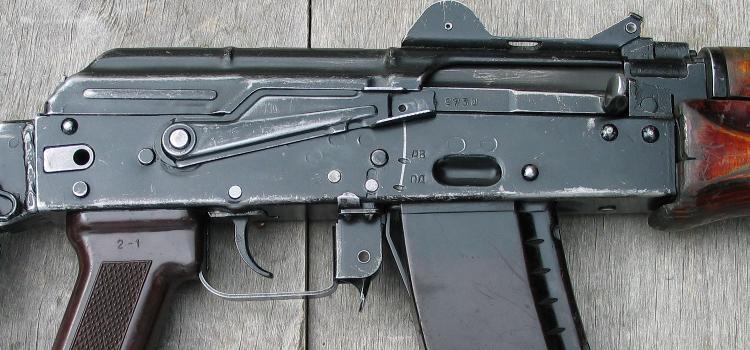
FIG. 1: Right hand side of receiver.
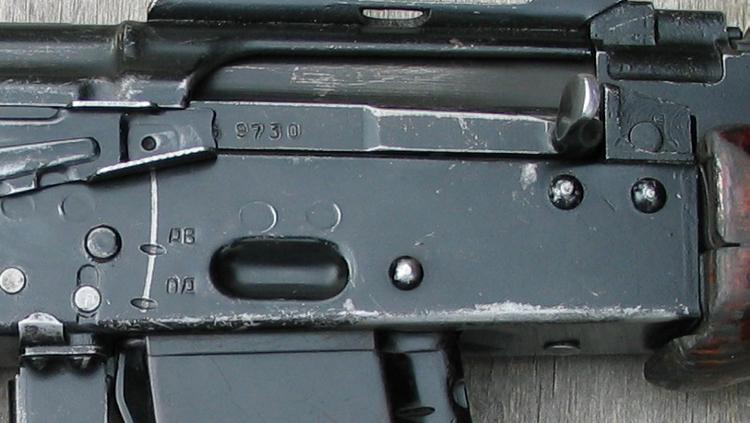
FIG. 2: Right side detail of receiver and ejection port
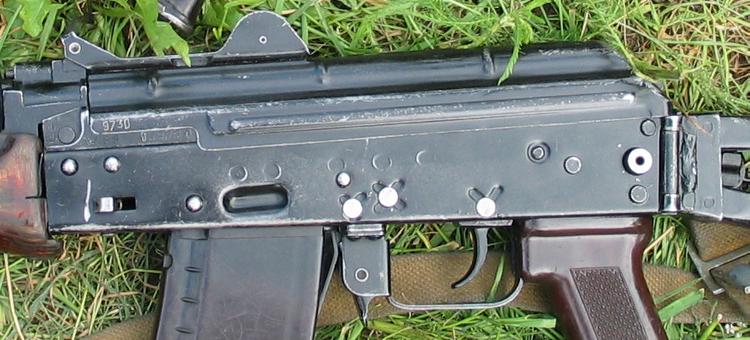
FIG 3: Left side view of receiver
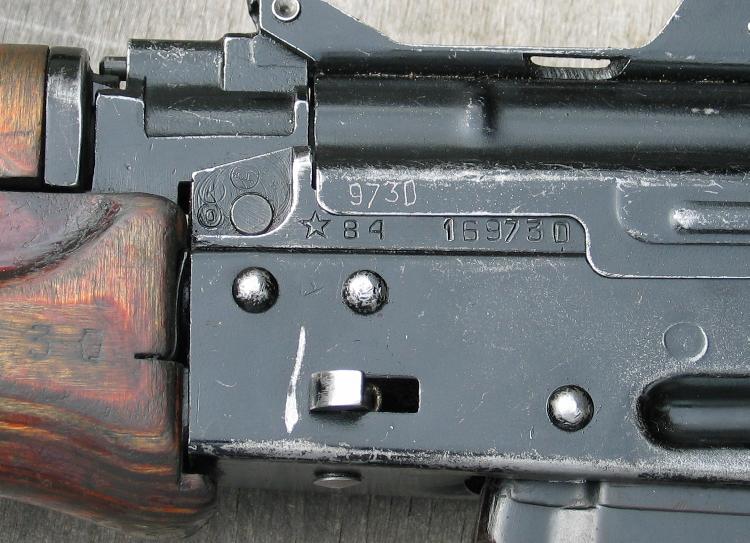
FIG 4: Detail of trunnion markings
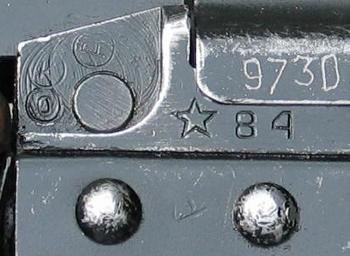
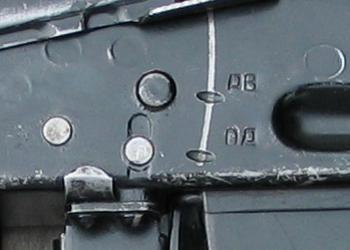
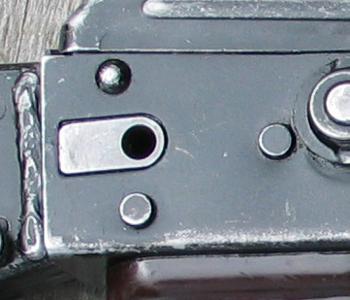
These detailed images of two twin 1984-dated Tula marked AKSU's show features such as vented laminated handguards, plum colored polyamide pistol grips, and mildly rolled edge folding stock struts. Within the next couple of years, the handguards would lose the cooling vents and the stock struts would become more radically rolled. The muzzle booster on these rifles is a later model from the earlier version seen on the 1983 Tula AKSU, featured on page 15. The earlier booster has a rounded front face on the expansion chamber, while these are less bevelled, with a sharper, squared off front face. The earlier version was copied by Bulgaria, and is the most common variety seen on the US parts market.
The Tula state arsenal plant "Star" arsenal code, two digit year of production and seven digit production sequential serial number adorn the trunnion block. Notice the three different proof marks stamped onto the trunnion, each one indicating a separate test or check was made to the rifle while it was being manufactured. One no doubt indicates the rifle met headspacing requirements, while another may mean the barrel pin was correctly installed, etc. There is also a mildly stamped proof between the two top trunnion rivets, below the trunnion stampings. This is probably an indication the rivet work was checked by a line inspector, and passed specifications.
Note the methods in marking the three digit serial numbers on the gas tube, handguards, receiver cover, and selector levers. The "trigger bumps" common to Russian AK-74 receivers are only present on the right side of the trigger hole, and have not yet been adopted to both sides as in the later AK-74 rifles. This is the same design used on early Russian AK-74's and copied on Bulgarian AK-74's, which never adopted the dual trigger bumps.
Note that Russian AKSU's do not use receiver reinforcing plates where the pistol grip attaches, like AKMS and AKS-74's. This is not the case with the Bulgarian AKSU, which does use the plate. This is because the Bulgarian AKSU is built on the same receiver at the same factory as the full size AKS-74 rifle. Russian designers must feel the lighter, shorter AKSU did not need any additional rigidity at this area and the plate would only add weight and expense.
As opposed to Bulgarian practices, all rivet heads on both sides of the rear trunnion of both AKSU and AKS-74 rifles are flat except the top one on the right hand side.
| |
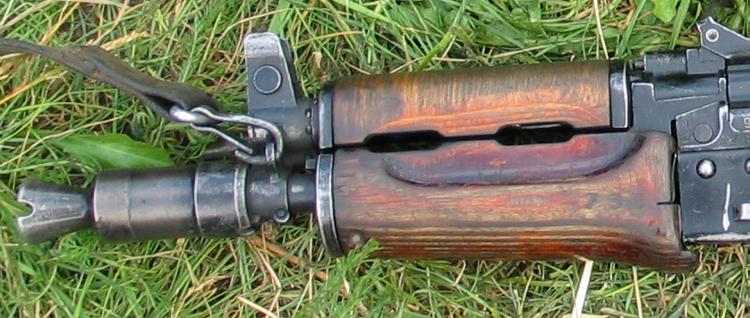
IMAGE 5: Detail of early style handguards
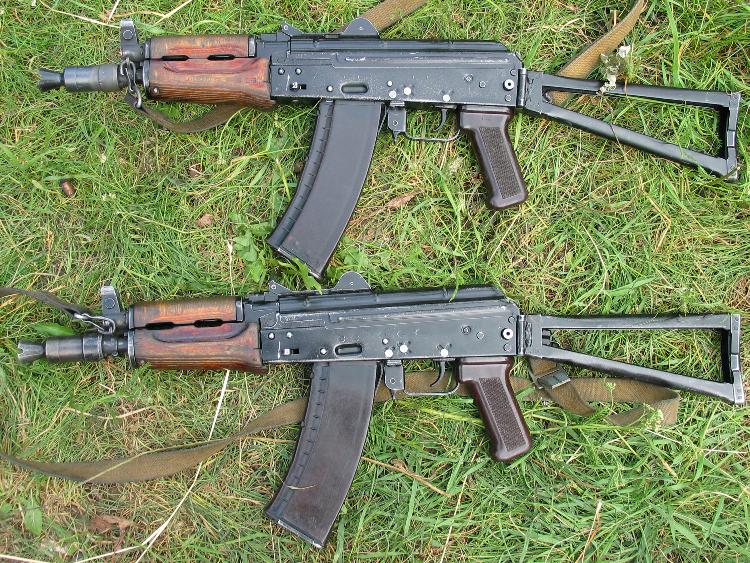
IMAGE 6: "The Twins"
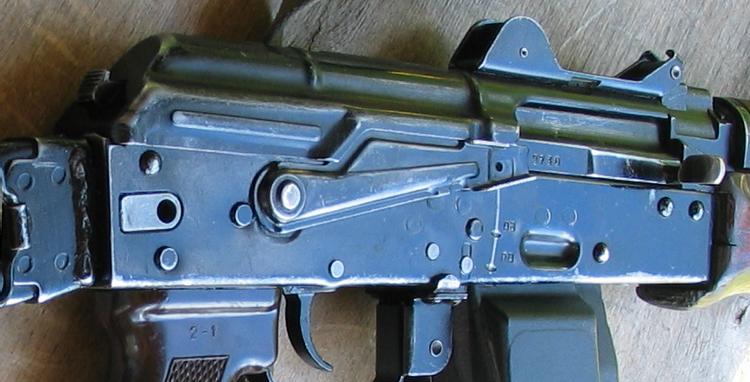
IMAGE 7: Right hand view of receiver
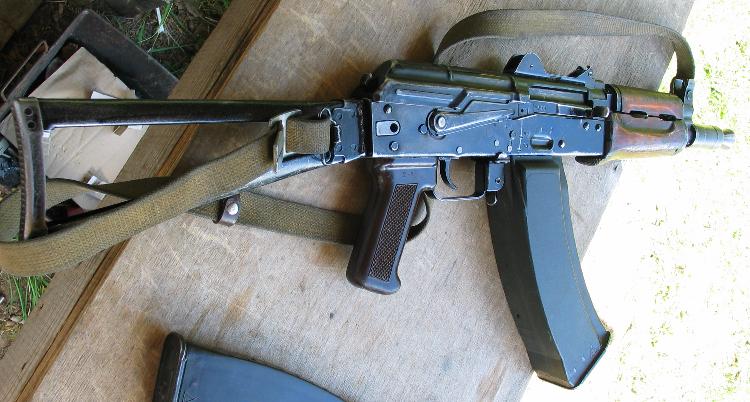
IMAGE 8: AKSU with 60 round box magazine
These last few images show a unique and rare view of the plastic 5,45x39mm 60-round "quad" magazine developed by Izhmash for the AK-74M and derivatives. It is said there are only a few of these in existence, but the fact it is fully operation and is on hand for live fire exercises with future clients, business partners, military representatives and so on, must mean they are no doubt fully developed and meet combat reliability requirements. It may only be a short while before we see these in the hands of CIS forces.
 See our AK-74 Production Variations Study by clicking the link above. See our AK-74 Production Variations Study by clicking the link above.
 AK Projects Section Index
AK Projects Section Index
|













